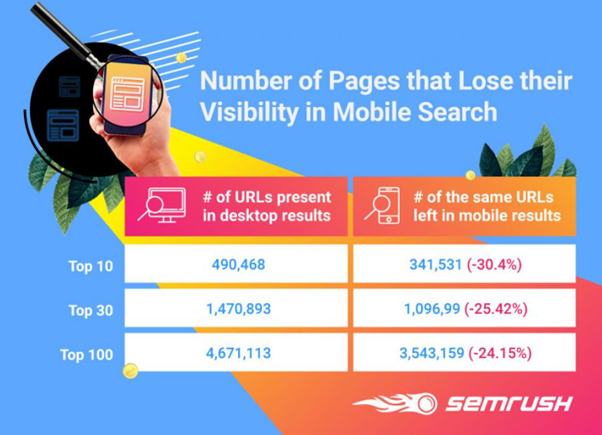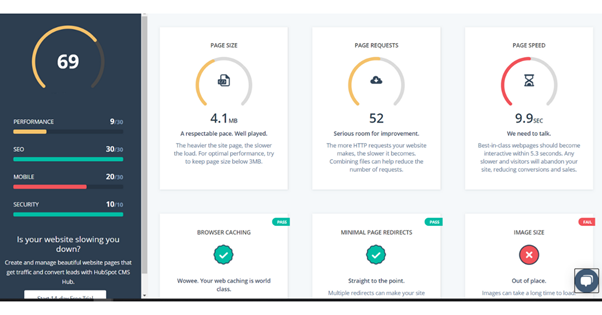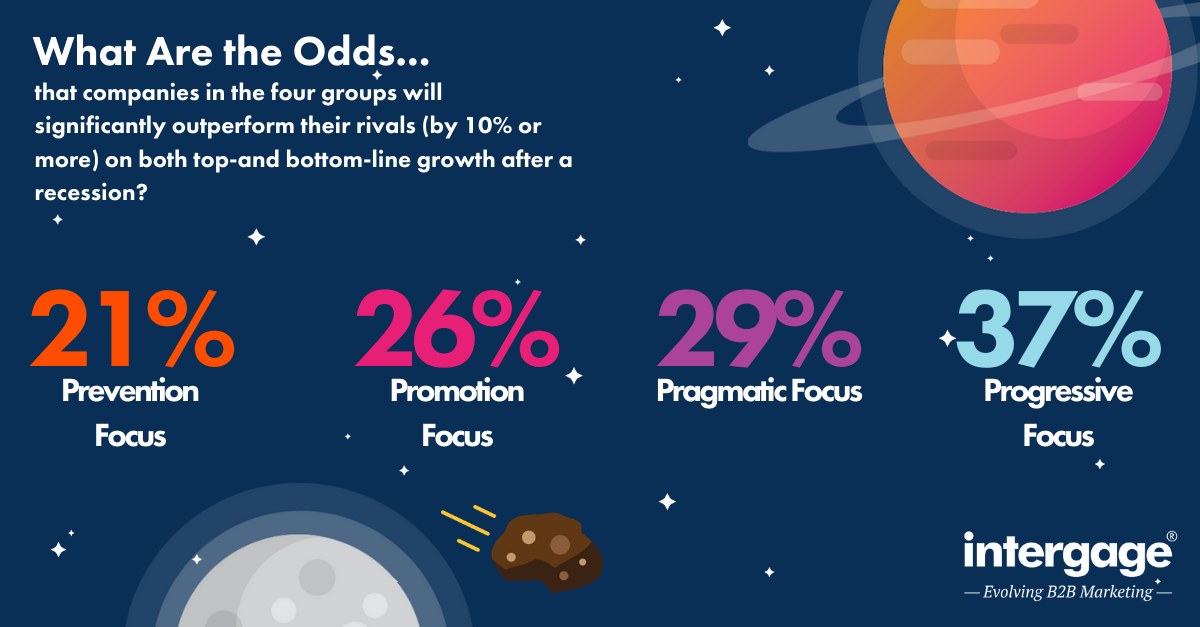7 Reasons Your Website Is Losing First Page Positions
Getting to the top of Google is hard. Staying there is harder still.
There are few sights as traumatic to digital marketers who have strived for and secured first page positions than that of their content dropping like a stone.
The impact of that dreaded scenario is obvious, but the reasons behind it are less so.
The truth is any change is likely the result of a combination of factors. In this blog we’ll explore them all
1. Your (New) Website Isn’t Up To Scratch
The launch of a new website is an exciting moment for any business. Your digital storefront, it’s the best place to showcase your product or service offering and often acts as a credibility check for those in the decision-making phase of the buyer’s journey.
A newly designed site, complete with an improved user journey, should in theory help you climb search rankings. At the very least it will ensure you maintain your current standing.
Even so, it’s not uncommon for new sites to suddenly disappear from page one of Google. Why? Because the search engine is known to re-evaluate websites following a relaunch, crawling published content to revisit its own trust score.
The good news is this is nearly always a temporary occurrence. Providing you have maintained the quality and quantity of your content, your original position will soon be restored.
In the unlikely event your exclusion stretches several weeks, the likelihood is something has gone badly awry during the changeover itself. In nearly all instances, this can be attributed to re-directs or rather a lack of them.
When looking to refine the number of pages on your site map it’s vitally important to apply 301 re-directs from content you’re dispensing with, to that you’re either retaining or publishing for the very first time.
Over the course of several years these pages will have built up a history and authority within Google, contributing to your overall search visibility.
To discard of them is to discard of that same influence.
Ensure re-directs are not only applied but applied right. Presenting an end user with a page talking about aerospace manufacturing is no use if they’re expecting one talking about metals and mining. This is an example of a bad user experience, something we’ll touch on later in the article. Remember, relevance is key.
2. You’ve Been Affected By A Google Algorithm Change!
A Google algorithm change is always a seismic event.
They may be few and far between (only eight have been released since 2002) but they impact the search landscape unlike anything else.
The most recent instalment was 2019’s Bidirectional Encoder Representations from Transformers, or BERT for short.
Described as a ‘natural language processing algorithm’ it empowered the search engine to better understand the context of search queries, redefining subsequent results.
Whereas previous searches may have triggered listings that were broadly relevant, now they are far more refined.
What does this mean for those hoping to retain page one positions? In short, your content needs to become highly specific, using the words and language that your customers would use when searching. You need detailed, relevant content.
It’s not enough to publish a 3,000-word article that scratches the surface of a topic. Blogs with a weak focus will fall by the wayside and be displaced by those that answer questions quickly and in great detail.
Any business hoping to retain current visibility should seek to adjust and optimise existing content with BERT in mind.
The more focused your copy and the more value it provides, the more favourably you’ll be looked upon. Copy itself can - and where possible should - be complemented with the likes of video, infographics and audio.
Simply put, the blanket approach will no longer suffice. Google is more aware than ever of exactly what it is people are looking for.
3. Your Content Isn’t Relevant Anymore
They say a week is a long time in politics, but the fact is that mantra can be applied to most industries. The upshot is your existing content can quickly seem outdated.
What may have appeared accurate and topical in 2020 may be neither in 2021.
If your sector is a fast-paced one, defined by new developments, legislation or technology, you simply have to keep pace.
Not only does this necessitate the writing of new articles but the optimisation of historic ones too. To prevent a highly ranked blog from sliding down search results, revisit it and ensure any information or opinion is up to date. It’s something we’ll do with this very blog, once BERT is superseded by another algorithm change.
It’s also an approach you should take to all content in order to beat out the competition. Even articles which remain relevant can be enhanced further still. A high performing page will become a primary target for competitors looking to write something better themselves. Yours is a constant battle to impress Google, so don’t rest on your laurels.
4. You’ve Been Overtaken By Your Competitors
Being complacent when it comes to tracking your competition isn’t an option. You could have the top positions in search engines for years only to be knocked down a peg or two when one of your competitors ups their game unexpectedly.
Perhaps they have invested in creating more content, have restructured the content they already have or have done a great job building their new website. If they do it without you realising, you could be in for a nasty shock.
That’s why it’s great to regularly review what your competition is up to. That means understanding which keywords they rank for, what content they’re creating, where they advertise - and if you can – what share of the online market they have.
We regularly complete this bit for qualifying businesses in one of our FREE digital marketing competitor reports. You can request yours here.
5. Your Website Isn’t Mobile Responsive (Still?!)
Did you know that from March 2021 every website will be crawled mobile first, regardless of whether or not it is responsive?
Intergage have long preached the importance of tailoring content at that resolution and it comes as no surprise to learn it will directly impact search positions.
In actuality, it has done just that for some time. A 2019 study from SEMrush discovered that roughly 30% of first page listings on desktop dipped below the top 10 on mobile.

This is yet another example of Google prioritising user experience.
Informative and well-written content for desktop matters little if it’s badly presented for mobile. That means a particular audience is being overlooked, something Google will take issue with and penalise you for accordingly.
It’s never been more important to design upwards and prioritise mobile. If that means doing away with certain elements, so be it. That’s a price worth paying for a good user experience and, by extension, a strong search presence.
6. Something’s Slowing You Down
It’s easy to become consumed with copywriting and overlook other key components of a website, such as load speed.
The latter is however a contributing factor to your domain authority and, naturally, search presence.
Given the endless number of websites available to them, end users are not prepared to wait longer than two seconds for a URL to load. They’d sooner exit your site and load another.
Google will take a similarly dim view if any one page exceeds six seconds to load. In that instance your content will be relegated below others with similar detail, minus the inconvenience.
Staying on top of load speeds is essential if you hope to muscle in on leading search results. This can be achieved by tapping into the likes of Google Lighthouse and HubSpot’s website grader which will score your website and give you recommendations for how to improve site performance.

You may be advised to reduce image file sizes, minify CSS or even disable JavaScript. While all instructions should be looked at objectively, finding ways to accelerate load speeds is good practice.
7. Poor User Experience
Throughout the course of this article, we have returned time and again to one factor – user experience. A good UX cannot be overestimated and is in many ways just as important as any on-page copy or SEO.
To pour resource into content creation, only to neglect the likes of presentation and navigation is short-sighted in the extreme. It’s also costly in more ways than one.
Google is constantly assessing user flow and engagement, reliably informed by top level metrics such as Bounce Rate, Average Time on Page, Pages per Session and Returning Users.
If it notices dissatisfaction on behalf of users, it won’t hesitate to reflect that in your positioning.
Site owners must therefore tap into analytics and monitor the likes of Next Clicks and Navigation Summaries to better understand how their content is gripping readers – or not, as may be the case. Tweaking elements and improving the user experience is a great way to sustain and improve your position within Google.
A Constant Battle
Evidently, Google rankings are impacted by a number of factors which combine to determine how relevant and valuable your content is to the end user.
Keeping all of the above in mind is essential if you hope to retain a first page position. Overlooking just one could result in little to no traffic making its way to your website, a deterioration born out in fewer leads and fewer sales alike.
SEO isn’t meant to be easy. Good search presence is achieved through hard work that never stops. Competition for traffic, engagement and custom is fierce. You must be prepared to fight on all fronts.




